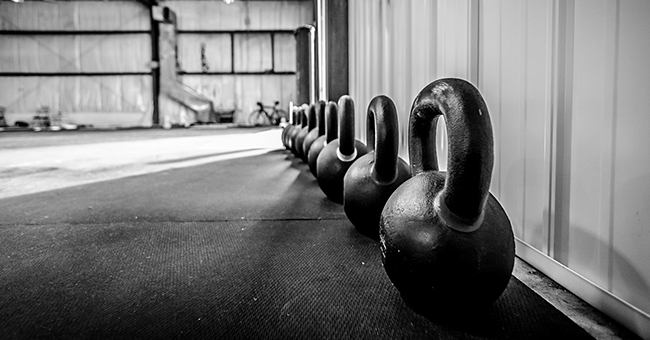Take a moment to envision the myriad movements you perform for hours behind the bar: bending or squatting to lift a case, reaching overhead to rack glasses or grab the Macallan 30 Year, perhaps carrying a tray of drinks, opening the cooler door, sliding a beer across the counter. Now, imagine that there is a total-body workout to strengthen those movements, lessen lower back pain and increase your physical endurance, flexibility, and heart health that can be completed in twenty to thirty minutes, just a few times a week, in your living room. On board?
Meet the kettlebell: a cast-iron weight developed in Russia in the 1700s, originally used to weigh crops and later used to train the Soviet army. “Enter the Kettlebell,” a how-to guide on mastering the kettlebell, describes the weight as “a cannonball with handles,” an appropriate definition for a piece of equipment used in explosive movements. The book goes on: “The kettlebell delivers extreme all-around fitness. All-purpose strength. Staying power. Flexibility.” It touts the weight as a “compact” and “virtually indestructible tool that can be used anywhere.”
The kettlebell workout’s efficiency and flexibility makes it a favorite among many fitness trainers. Stacy Sax, a Russian Kettlebell Challenge (RKC) certified coach and general manager for FitWit gym in Atlanta says, “it’s a cool tool because it’s portable and packs resistance training and cardio endurance into a short period of time.” To complete a workout, you only need about 25 square feet of space and thirty minutes.
Thomas Lafera, an RKC-certified coach in Manhattan, says his favorite thing about the kettlebell is its versatility. “It’s adaptable to a lot of different physical levels. Kettlebells work well with many body types.” No matter your size or strength, there is an appropriate kettlebell for someone at any level of fitness. “Enter the Kettlebell,” recommends that an average woman begin with an 18-pound kettlebell and the average man with a 35-pound kettlebell. As you advance in the practice, you can purchase heavier weights.
Of course, both Lafera and Sax agree that you first need to find an RKC certified coach to train you. Sax says, “The best way to start is to find a certified instructor who can teach you the basic movements.” Trying to learn on your own can result in an injury (and bartenders already have plenty of those to worry about). “This can be a minimal investment,” she says, so you’re not spending all your hard-earned tips on regularly seeing a trainer. “Once you’re taught the foundational movements, you can self-guide.” Because these movements are simple, the difference between right and wrong can mean the difference between trained and strained. “Coaches help you find the devil in the details,” says Lafera.
The kettlebell can adapt to a wide-range of fitness goals. Some like the kettlebell because it feels like warrior training — releasing a lot of pent-up energy and stress in quick, fierce bursts of movement. Others appreciate its inherent fat-loss component. “The kettlebell uses so many muscle groups that you burn a lot of fat and will see results more quickly using it for thirty minutes than if you do a thirty minute jog,” says Sax. Some days, fifteen minutes is plenty. Regardless of your goals or your current fitness levels, the kettlebell offers the same benefits to everyone: inexpensive, flexible, and efficient high intensity workouts that burn fat and increase your physical stamina. Translate this to the bartender’s world, and it means more endurance for your physically demanding shifts, a one-time purchase so tips don’t go towards a gym membership, and the ability to work out whenever and wherever is convenient for your schedule.
Kettlebells range in price, depending on their weight and manufacturer, which is another good reason to find an RKC coach to help you decide what’s best to buy. When you’re ready to get started, kettlebells can be purchased online at Amazon or Dragon Door or in stores like Dick’s Sporting Goods and Target.
“A bartender and barback’s physical work can be broken down into simple functional movements,” says Lafera, “hinge, squat, push, pull, carry.” Each of those movements has a corresponding kettlebell move which will make your work easier and more graceful. Besides, the practice is engaging. “There is a never-ending opportunity to improve,” says Sax. “Because it requires focus and engagement, your mind is forced off of your shift or what you have to do later.”





